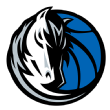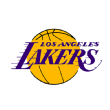On Monday night, the NBA passed the quarter mark of the 2021-22 regular season. Although there's nothing inherently magical about the 20-game mark, which the San Antonio Spurs will become the last team to reach it on Thursday, it is conveniently about the point where this season's results have historically become as predictive as our preseason expectations.
Already, some of the league's biggest early surprises have started to drift back toward the pack. After starting 10-3, the Washington Wizards have lost five of their past eight games. The defending champion Milwaukee Bucks, who started 6-8 as they battled absences for several starters, have caught the Wizards in the standings thanks to a seven-game winning streak.
Meanwhile, the top three in the Western Conference looks reasonably set with the Golden State Warriors, Phoenix Suns and Utah Jazz a level above anyone else in the middle-heavy West.
Nonetheless, the first month and a half of the new season has still provided enough time to change our opinions of a handful of teams.
Based on the predictive power of team stats at the same point in past seasons, let's look at the biggest movers thus far, including one early favorite that has seen its projection drop from their preseason total nearly twice as much as any other team in the league.
Predicting future wins in the NBA
First, let's look back on past 82-game seasons to see how quickly team performance stabilizes. Specifically, considering seasons from 2012-13 through 2018-19 (the last 82-game schedule prior to this one), I looked at how well a handful of measures explained what a team's record would be over the remainder of the year.
Of the three measures of season performance, win percentage to date is generally the weakest predictor, particularly at this stage of the campaign. As is typically the case, point differential better explains how often a team will win games than how often they have won in the past because it accounts for dominance in lopsided games and isn't as affected by close wins or losses.
We can improve slightly on point differential with a schedule-adjusted rating that incorporates the location of the game and the opponent.
Lastly, a team's preseason over/under win total has a slightly different relationship with future record. Unlike the other measures, which get stronger with bigger sample sizes until about midseason, the preseason total starts out at its peak of predictiveness and wanes from there. That makes sense given roster changes and injuries over the course of the season will change teams' true ability from what's predicted going into the year.
As noted, those lines meet a little after the 20-game mark -- the point when this season's results become a better predictor than preseason totals.
If you're looking to make predictions about a team's record the rest of the season, the best method combines preseason total with schedule-adjusted rating to date. (Since differential and win percentage are similar measures, they don't add significantly to the projection.) We can then compare those projections to the team's preseason total and see which have improved their outlook the most.
Here are the five biggest changes -- two positive and three on the negative side.
Golden State Warriors (+.103)
 Expectations were reasonably high for the Warriors coming into the season, in part because of something that hasn't happened yet: the return of Klay Thompson after more than two full seasons lost to injuries.
Expectations were reasonably high for the Warriors coming into the season, in part because of something that hasn't happened yet: the return of Klay Thompson after more than two full seasons lost to injuries.
Golden State's total (48.5 wins) was tied for seventh-highest at the Caesars Sportsbook by William Hill. Still, the Warriors have managed to improve on it the most of any team by posting the league's highest schedule-adjusted rating, even with the NBA's easiest schedule before Tuesday's loss in a showdown with a Phoenix team that has won 17 in a row.
At the very least, Golden State has jumped into the top tier of contenders in the West. And if Thompson can come back somewhere near his former level, the Warriors could easily end up the favorites to win the conference.
Cleveland Cavaliers (+.097)
 As compared to the other surprising teams in the East (Washington, the Chicago Bulls and Charlotte Hornets), the Cavaliers stand out because expectations for them were much lower entering the season. Cleveland's total of 26.5 wins suggested another season battling for lottery position. Instead, the Cavaliers are still a game above .500 and there's nothing fluky about their point differential (plus-1.0 per game) or schedule (harder than average thus far).
As compared to the other surprising teams in the East (Washington, the Chicago Bulls and Charlotte Hornets), the Cavaliers stand out because expectations for them were much lower entering the season. Cleveland's total of 26.5 wins suggested another season battling for lottery position. Instead, the Cavaliers are still a game above .500 and there's nothing fluky about their point differential (plus-1.0 per game) or schedule (harder than average thus far).
The odds of Cleveland making the playoffs are still low. The second-biggest boost to their preseason total leaves the Cavaliers projected to win just 42% of their games going forward, which would put them around a total of 37 wins. In what looks like a competitive East, that might not be enough for a spot in the play-in tournament. That shouldn't take away from the excitement about Cleveland's future with No. 3 overall pick Evan Mobley looking like a future franchise anchor.
Memphis Grizzlies (-.058)
 On the surface, the Grizzlies seem to be right on track for another season in the play-in tournament or better with an 11-10 start. Under the hood, however, Memphis' fundamentals show reason for concern. The Grizzlies' minus-4.4 point differential ranks 12th in the West, ahead of the rebuilding Houston Rockets and Oklahoma City Thunder and the short-handed New Orleans Pelicans.
On the surface, the Grizzlies seem to be right on track for another season in the play-in tournament or better with an 11-10 start. Under the hood, however, Memphis' fundamentals show reason for concern. The Grizzlies' minus-4.4 point differential ranks 12th in the West, ahead of the rebuilding Houston Rockets and Oklahoma City Thunder and the short-handed New Orleans Pelicans.
In particular, Memphis can't stop anybody. The Grizzlies were surprisingly competitive on defense with a first-year head coach (Taylor Jenkins) and young roster in 2019-20, ranking 14th in defensive rating, and jumped up to seventh last season as they made the playoffs. Given limited roster turnover, it's shocking the Grizzlies have dropped all the way to last in defensive rating.
Memphis is due to benefit from weaker opponent shooting the rest of the season. Opponents are shooting an effective 55.4% on attempts outside the paint after accounting for the added value of 3s, the highest mark in the league according to Second Spectrum tracking. Yet opponents are still getting higher-quality shots against the Grizzlies than last season and the team's ability to force turnovers and grab defensive rebounds has waned.
As a result, Memphis projects to win just 45% of its games going forward, a mark that ranks 10th among West teams. The Grizzlies should still be safely in the play-in but might have to go on the road for their opening game this time around.
Dallas Mavericks (-.062)
 Like with Memphis, Dallas' point differential (minus-2.4, ninth in the West) tells a different story than the team's 10-9 record. The Mavericks have just four wins by double figures, tied with the Grizzlies for the league's seventh-lowest total, and have been crushed twice (by 26 points in their season opener at Atlanta and by 31 at Denver).
Like with Memphis, Dallas' point differential (minus-2.4, ninth in the West) tells a different story than the team's 10-9 record. The Mavericks have just four wins by double figures, tied with the Grizzlies for the league's seventh-lowest total, and have been crushed twice (by 26 points in their season opener at Atlanta and by 31 at Denver).
Dallas' issues come at the other end of the court. While the team's defense has remained in the same spot (21st in defensive rating) under new coach Jason Kidd, the potent Luka Doncic-led offensive attack of the past two seasons has disappeared. The Mavericks are a disappointing 19th in offensive rating and Doncic has a career-low .530 true shooting percentage.
By comparison to the other teams on the wrong end of this list, Dallas has an easier fix if Doncic shakes off his sluggish start and the ankle sprain that sidelined him three games recently to play at an All-NBA level once again.
Los Angeles Lakers (-.121)
 And here's where we hit the big one. The Lakers have seen their projection drop from their preseason total nearly twice as much as any other team. Again, the Lakers' 12-11 record conceals how poorly they've played to date. First, the Lakers are one of those six teams with fewer double-digit wins than the Mavericks and Grizzlies. Tuesday's blowout of the Sacramento Kings was their third of the season, putting them ahead of only teams with rookies in key roles (the Houston Rockets, Oklahoma City Thunder and Orlando Magic). That helps explain why the Lakers have been outscored by 1.6 points per game.
And here's where we hit the big one. The Lakers have seen their projection drop from their preseason total nearly twice as much as any other team. Again, the Lakers' 12-11 record conceals how poorly they've played to date. First, the Lakers are one of those six teams with fewer double-digit wins than the Mavericks and Grizzlies. Tuesday's blowout of the Sacramento Kings was their third of the season, putting them ahead of only teams with rookies in key roles (the Houston Rockets, Oklahoma City Thunder and Orlando Magic). That helps explain why the Lakers have been outscored by 1.6 points per game.
Second, that's come against the league's second-easiest schedule to date, featuring 14 home games and just nine on the road. To be on track for the kind of record their preseason total (52.5 wins) portended, the Lakers would have to be one of the league's best teams to date. Instead, after accounting for their schedule, they've played like one of the worst.
The caveat here is health. The Lakers have gone 7-4 in the 11 games LeBron James has played thus far and have yet to see newcomers Trevor Ariza and Kendrick Nunn suit up for a game, forcing them to rely more heavily on their limited depth and their centers than expected.
On the other hand, the Lakers' above-.500 projection going forward (.519) is dependent on their preseason total. If we instead relied on preseason statistical projections, our outlook would be much dimmer. FiveThirtyEight's projections had the Lakers going 42-40 before the season and had already dropped six wins to 36-46 on average before Tuesday's news that LeBron is in the NBA's health and safety protocols, yet another hit to the Lakers' forecast.
I think the safest thing to say about the Lakers at this point is they have the widest range of potential finishes of any NBA team. If LeBron gets and stays healthy and Russell Westbrook enjoys the same physical improvement over the course of the season we've seen the past two years, it's still possible the Lakers could emerge as the title contenders we expected.
If James continues to struggle with injuries and the Westbrook-Anthony Davis duo remains ineffective without him, it's also realistic that the Lakers might not reach the playoffs.
